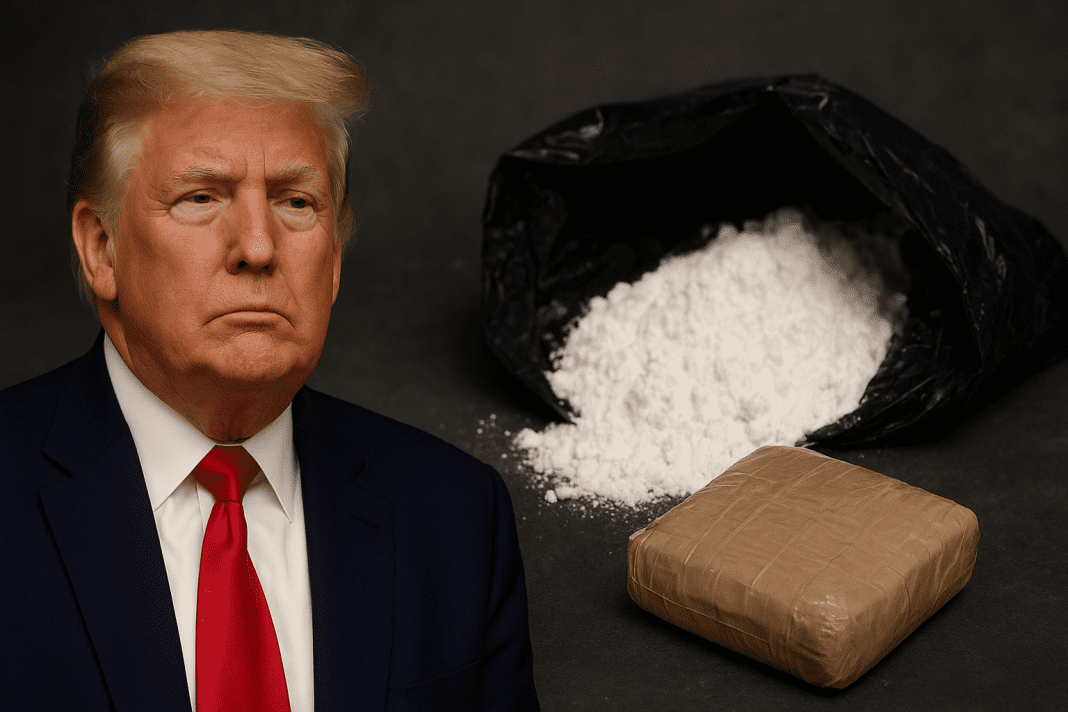The price of cocaine in the United States has dropped to levels not seen in years, and experts point to a surprising reason. Under President Donald Trump, federal agents who once worked to stop drug trafficking were redirected to immigration enforcement. This decision created gaps along the U.S.-Mexico border, giving drug cartels an easier path to smuggle cocaine into the country.
According to The Wall Street Journal, checkpoints in Arizona that were meant to catch smugglers were left unstaffed because border agents were reassigned to detain migrants. With fewer obstacles in their way, traffickers found it simpler to move drugs north.
The result is striking. Cocaine now sells for about $60 a gram, nearly half of what it cost five years ago. Experts say the sharp fall in price is tied to the wider availability of high-quality cocaine. The increased supply has made the drug more accessible, even as demand continues to rise across parts of the country.
UCCS directive tightens rules on release of personal information to immigration enforcement agencies
Rise of a Cocaine Kingpin
At the center of this shift is Nemesio Oseguera Cervantes, better known as “El Mencho.” He leads the Jalisco New Generation Cartel (CJNG), one of Mexico’s most powerful criminal organizations. Stationed in the rugged Sierra Madre mountains, Oseguera has built an empire focused heavily on cocaine.
While U.S. authorities were busy targeting fentanyl operations run by the Sinaloa cartel, CJNG quietly expanded. As fentanyl sales dipped, Oseguera’s group gained more control over the cocaine market. His power grew so large that the U.S. government placed a $15 million bounty on his head.
Jorge Alberto Alfonso Arrested: Fake CIA IDs, Guns, and Drugs Found
Former leaders of the Drug Enforcement Administration (DEA) have described Oseguera as the most powerful drug trafficker in the world. Despite his notoriety, his cartel benefited from the Trump administration’s focus on immigration crackdowns rather than on drug cartels like CJNG.
The Journal noted that this shift in federal priorities effectively gave Oseguera and his cartel a “gift.” By reducing the manpower dedicated to stopping drug smuggling, the U.S. inadvertently helped cocaine traffickers expand their reach.
U.S. Drug Use and Public Reactions
The fall in cocaine prices has coincided with a major rise in consumption. In the western United States, Americans are using 154% more cocaine than they did in 2019. Analysts say the surge in availability, combined with lower costs, has fueled this growth in demand.
Despite the increased flow of drugs, the Trump administration attempted to show strength against traffickers in other ways. In recent weeks, federal officials announced they had destroyed two boats off the coast of Venezuela, claiming they carried illegal drugs. However, no evidence was provided to support those claims.
On his Truth Social account, Trump issued a warning: “BE WARNED — IF YOU ARE TRANSPORTING DRUGS THAT CAN KILL AMERICANS, WE ARE HUNTING YOU!” The administration presented the boat attacks as proof of their efforts to stop narcotics, but critics argue these actions did little to address the broader cocaine trade into the U.S.
U.S. veteran detained by immigration officers in California over identity despite valid ID
Meanwhile, political figures have also joined the conversation. Vice President JD Vance told a crowd about a discussion he had with Defense Secretary Pete Hegseth. Hegseth reportedly said that drug boats were no longer entering the United States, to which Vance replied, “I know why. I would stop too.” His comments reflected a belief that traffickers were shifting their methods and routes, not that the problem had disappeared.
The situation shows how changes in government priorities can have unexpected effects. By moving resources away from drug enforcement, the Trump administration made it easier for cartels like CJNG to move cocaine into the country. That shift, combined with the rise of El Mencho’s cartel, has reshaped the drug market and driven cocaine prices to historic lows.

